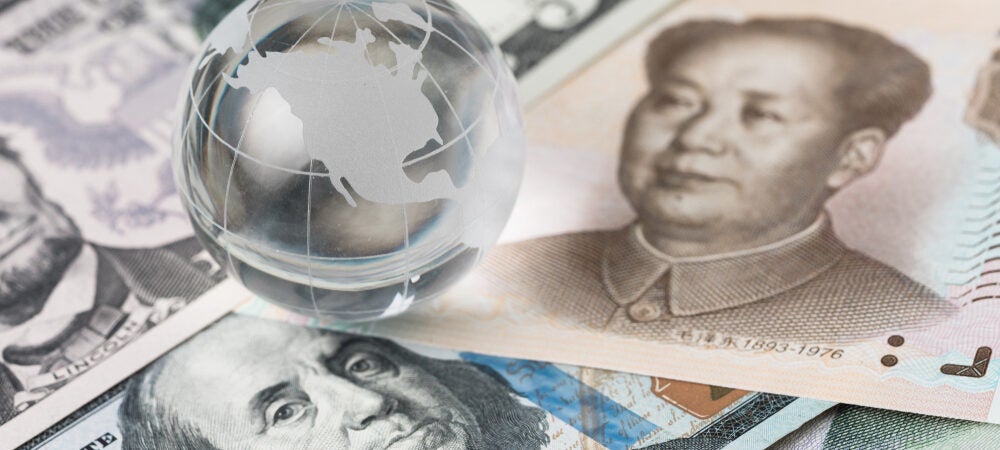Higher demand from U.S. and China means expanding into new markets
Trade wars are usually bad for the countries involved. After the U.S. and China launched tit-for-tat tariffs on imports from each other in 2018, prices rose for American consumers, jobs were lost and corporate profits fell. Economic growth in both countries slowed.
There was also some fear that the Trump administration’s tariffs, which hit other U.S. trading partners, would suppress global exchange and lead to a new period of protectionism.
But for countries not in the middle of the trade war, research suggests, the opposite happened.
In a working paper, UCLA’s Pablo Fajgelbaum, Yale’s Pinelopi Goldberg, UC Berkeley’s Patrick Kennedy, Yale’s Amit Khandelwal and the World Bank’s Daria Taglioni describe how “bystander countries” — those on the sidelines of the U.S.-China dispute — increased their exports of products subject to the tariffs to both the U.S. and to the rest of the world. (Exports to China were mostly unchanged.)
The findings suggest that these countries didn’t just shift goods from their existing trading partners to fill a gap caused by the higher tariffs. Instead, they were able to boost production and increase exports of targeted goods into new and expanded markets. Overall, bystander countries increased their exports of taxed items an average of 6.7% during the period studied, compared with nontaxed products.
Winners and Losers
“The trade war created net trade opportunities rather than simply shifting trade across destinations,” the authors write.
Not all countries benefited, though. Some — notably Vietnam, Thailand, Korea and Mexico — were able to boost exports significantly, in part by providing substitutes for goods subject to the U.S.-China tariffs. Others, such as Ukraine and Colombia, saw a decline, largely because their exports complemented goods hit by the tariffs.
The U.S.-China trade war began in mid-2018 when then-President Donald Trump hit China with a series of rising tariffs on a variety of imported goods and China retaliated by raising duties on U.S. products. (At the same time, the Trump administration also imposed duties on steel, aluminum and machinery imports from other trading partners.) The U.S. tariffs affected about $350 billion in imports from China, or about 18% of the total, while China’s tariffs covered about $100 billion, or about 11%, of goods imported from the U.S.
Although trade tensions eased in 2020 when the two countries agreed to put a freeze on plans for additional trade duties, the existing tariffs remain in place.
Tariffs Caused a Huge Shift in Trade
The tariffs quickly had an impact. An analysis by the Peterson Institute for International Economics found that in 2022, Chinese imports subject to the highest U.S. tariffs — including semiconductors, furniture and some consumer electronics — were about 25% below their levels before the start of the trade war. The decline wasn’t due to a larger economic slowdown — Chinese imports that weren’t covered by added duties, such as laptops and computer monitors, increased by 42%.
But what about the rest of the world? To see how the trade war affected exports from bystander countries, the authors examined data from the United Nations’ Comtrade database about the trading patterns of the 48 largest exporting countries, (excluding oil exporters) between 2014 and 2019.
They found that bystanders increased exports to the U.S. for products with high tariffs, but not to China. Shipments to the rest of the world increased for products subject to both U.S. and Chinese tariffs. Not only was there considerable variance among exporting countries, but also the most successful were those that were able to increase exports to the rest of the world, not just to the U.S.
Two factors seem to explain the difference. For one, successful exporters tended to ship goods that were substitutes for Chinese imports. So when U.S. customers looked for a replacement for, say, smartphones made in China, countries like Vietnam that made phones were poised to benefit.
What’s more, they were able to scale up production and achieve economies of scale so that the unit costs of their goods fell. This meant that the countries not only could compete successfully with the higher cost of taxed items, but their products became more competitive in markets that weren’t subject to the tariffs.
Vietnam, for instance, was one of the biggest winners from the trade war, increasing its exports of tires, sweatshirts and vacuum cleaners to both the U.S. and the rest of the world.
The study also suggests that successful countries weren’t just lucky enough to already specialize in products that would increase in demand after the trade-war tariffs hit. Instead, country-specific factors — such as a strong labor market or preexisting trade agreements — likely accounted for all the variation among countries.
Michael Totty is a freelance reporter and editor. Previously, he was a news editor with the Wall Street Journal in charge of assigning and editing Journal reports on technology, energy, health care, management and other topics. Totty works from Berkeley, California.
THE US-CHINA TRADE WAR AND GLOBAL REALLOCATIONSTo read the full research brief, please click here.
To read the full report as it was originally published by the National Bureau of Economic Research, click here.


